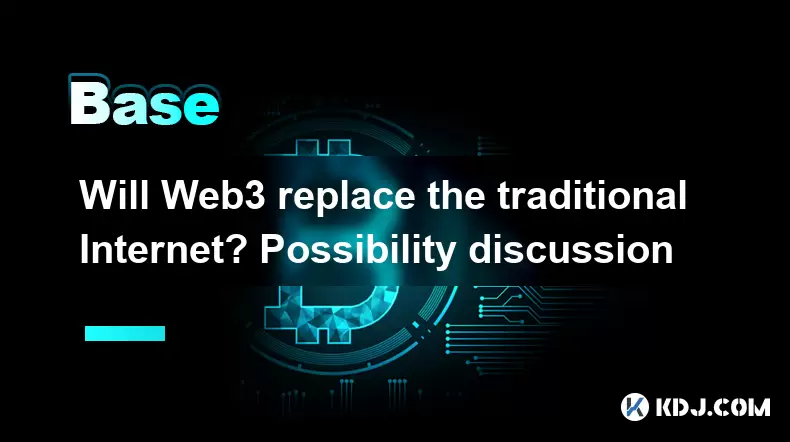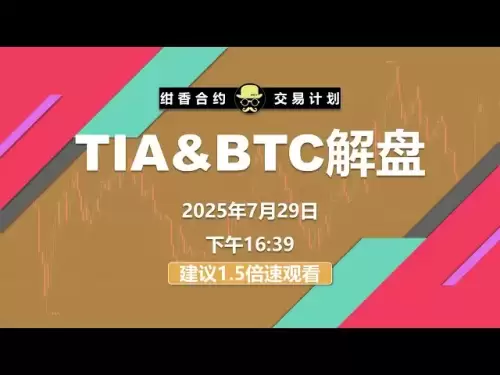-
 Bitcoin
Bitcoin $118300
0.04% -
 Ethereum
Ethereum $3810
0.40% -
 XRP
XRP $3.125
-1.23% -
 Tether USDt
Tether USDt $1.000
0.01% -
 BNB
BNB $814.0
-2.87% -
 Solana
Solana $181.5
-3.39% -
 USDC
USDC $1.000
0.01% -
 Dogecoin
Dogecoin $0.2253
-3.48% -
 TRON
TRON $0.3378
4.40% -
 Cardano
Cardano $0.7871
-2.49% -
 Hyperliquid
Hyperliquid $42.94
-3.09% -
 Sui
Sui $3.834
-6.92% -
 Stellar
Stellar $0.4211
-1.65% -
 Chainlink
Chainlink $17.89
-3.52% -
 Hedera
Hedera $0.2680
-2.70% -
 Bitcoin Cash
Bitcoin Cash $565.5
-3.24% -
 Avalanche
Avalanche $24.71
-6.42% -
 Litecoin
Litecoin $109.0
-1.42% -
 UNUS SED LEO
UNUS SED LEO $8.970
0.04% -
 Toncoin
Toncoin $3.238
-2.25% -
 Shiba Inu
Shiba Inu $0.00001321
-3.69% -
 Ethena USDe
Ethena USDe $1.001
0.01% -
 Uniswap
Uniswap $10.22
-3.53% -
 Polkadot
Polkadot $3.962
-3.43% -
 Monero
Monero $316.4
-2.87% -
 Dai
Dai $0.0000
0.02% -
 Bitget Token
Bitget Token $4.572
-1.47% -
 Pepe
Pepe $0.00001161
-6.32% -
 Cronos
Cronos $0.1443
2.82% -
 Aave
Aave $284.4
-3.07%
Will Web3 replace the traditional Internet? Possibility discussion
Web3 aims to decentralize the Internet using blockchain, but replacing the traditional web involves complex technological, economic, and social challenges.
Jun 03, 2025 at 04:43 pm

The discussion around whether Web3 will replace the traditional Internet is a hot topic within the cryptocurrency community. Web3 is often heralded as the next evolution of the Internet, promising to decentralize control, enhance privacy, and empower users through blockchain technology. However, the possibility of it fully replacing the traditional Internet is complex and multifaceted, involving technological, economic, and social considerations.
What is Web3?
Web3 refers to the third generation of the Internet, characterized by the integration of blockchain and decentralized technologies. Unlike the traditional Internet, where centralized entities control data and services, Web3 aims to distribute these controls across a network of users. This shift is intended to create a more open, transparent, and user-centric Internet. Key components of Web3 include decentralized applications (dApps), smart contracts, and cryptocurrencies, which enable peer-to-peer interactions without intermediaries.
Technological Feasibility
From a technological standpoint, the feasibility of Web3 replacing the traditional Internet hinges on several factors. Scalability is a primary concern; current blockchain technologies often struggle with high transaction volumes, leading to slow processing times and high fees. For Web3 to replace the traditional Internet, significant advancements in scalability solutions like sharding, layer-2 scaling, and sidechains are necessary.
Interoperability is another critical factor. The traditional Internet is a vast ecosystem of interconnected services and platforms. For Web3 to replace it, it must seamlessly integrate with existing systems or offer compelling alternatives that users are willing to adopt. Efforts like cross-chain protocols and decentralized identity solutions are steps in this direction, but much work remains to be done.
Economic Viability
The economic viability of Web3 replacing the traditional Internet involves assessing the business models and incentives that drive adoption. Decentralized finance (DeFi) platforms, for instance, offer a glimpse into how financial services could operate on Web3, but they must prove sustainable and user-friendly to attract a broad user base.
Tokenomics play a crucial role in incentivizing participation and maintaining the health of decentralized networks. Well-designed token economies can drive growth and engagement, but they must be carefully balanced to avoid issues like inflation or concentration of power. The success of Web3 in replacing the traditional Internet will partly depend on creating robust economic models that align with user and developer interests.
Social Acceptance
Social acceptance is perhaps the most challenging aspect of Web3's potential to replace the traditional Internet. User experience is a significant barrier; many current Web3 applications are less user-friendly than their centralized counterparts. For widespread adoption, Web3 must offer interfaces and experiences that are as intuitive and seamless as those on the traditional Internet.
Privacy and security are also central to the Web3 narrative. While blockchain technology promises enhanced privacy and security, it also introduces new vulnerabilities and complexities. Users must trust that Web3 systems can protect their data and assets more effectively than centralized platforms. Education and awareness campaigns will be essential in building this trust and encouraging users to embrace Web3.
Regulatory Environment
The regulatory environment will significantly impact Web3's ability to replace the traditional Internet. Regulations vary widely across jurisdictions, and Web3 technologies often challenge existing legal frameworks. For instance, the decentralized nature of blockchain can complicate issues like jurisdiction, taxation, and compliance.
Governments and regulatory bodies must navigate these complexities to create an environment that fosters innovation while protecting consumers. Collaborative efforts between regulators and the Web3 community could lead to more favorable conditions for growth, but the path to regulatory clarity is fraught with challenges.
Current Adoption and Use Cases
Current adoption and use cases provide insight into the potential of Web3 to replace the traditional Internet. Decentralized applications (dApps) are at the forefront of this movement, with sectors like finance, gaming, and social media seeing significant activity. Platforms like Uniswap, Axie Infinity, and Steemit demonstrate how Web3 can offer new models of interaction and value exchange.
However, these use cases are still niche compared to the vast landscape of the traditional Internet. For Web3 to replace it, these applications must not only grow in number and scope but also demonstrate clear advantages over centralized alternatives. The challenge lies in scaling these use cases to a level where they become integral to everyday Internet use.
Challenges and Barriers
Despite the promise of Web3, several challenges and barriers stand in the way of it replacing the traditional Internet. Technical complexity is a significant hurdle; developing and maintaining decentralized systems requires specialized knowledge and resources, which can deter developers and users.
Energy consumption is another concern, particularly with proof-of-work blockchains like Bitcoin. The environmental impact of these systems has led to criticism and calls for more sustainable alternatives, such as proof-of-stake. Addressing these concerns will be crucial for the long-term viability of Web3.
Centralization risks also loom large. While Web3 aims to decentralize control, the reality is often more nuanced. Issues like validator concentration, governance centralization, and the influence of large token holders can undermine the decentralized ethos. Ensuring true decentralization will be essential for Web3 to replace the traditional Internet.
Frequently Asked Questions
Q: Can Web3 coexist with the traditional Internet rather than replacing it?
A: Yes, Web3 can coexist with the traditional Internet. Many proponents envision a hybrid model where decentralized technologies complement existing centralized systems. This approach could leverage the strengths of both paradigms, offering users more choice and flexibility in how they interact online.
Q: How might Web3 impact Internet governance?
A: Web3 could significantly impact Internet governance by shifting control from centralized entities to decentralized networks. This shift could lead to more democratic and transparent decision-making processes, although it would also introduce new challenges in coordinating and enforcing policies across distributed systems.
Q: What role do cryptocurrencies play in the potential replacement of the traditional Internet by Web3?
A: Cryptocurrencies are a fundamental component of Web3, serving as the medium of exchange and value storage within decentralized ecosystems. They enable the economic models that drive participation and incentivize development, playing a crucial role in the potential replacement of the traditional Internet.
Q: Are there any successful examples of Web3 replacing traditional Internet services?
A: While Web3 has not fully replaced any traditional Internet services, there are successful examples of it offering compelling alternatives. Platforms like Uniswap in decentralized finance and Brave in web browsing demonstrate how Web3 can challenge centralized models and provide users with new options for interacting online.
Disclaimer:info@kdj.com
The information provided is not trading advice. kdj.com does not assume any responsibility for any investments made based on the information provided in this article. Cryptocurrencies are highly volatile and it is highly recommended that you invest with caution after thorough research!
If you believe that the content used on this website infringes your copyright, please contact us immediately (info@kdj.com) and we will delete it promptly.
- AI Tokens, Ethereum, and Market Leaders: A New Era?
- 2025-07-29 21:10:13
- Linea Airdrop: Ethereum Alignment & the L2 Network's Bold Move
- 2025-07-29 21:10:13
- Crypto Price Predictions: Pepe, Shiba Inu, and the Rise of BlockchainFX USDT
- 2025-07-29 21:50:13
- Hyperliquid, Bitget Token, and Remittix Investment: Navigating the Crypto Landscape
- 2025-07-29 21:50:13
- Shiba Inu, Remittix, and the Quest for 10,000% Gains: A Crypto Face-Off
- 2025-07-29 21:57:08
- Upchuck's 'Forgotten Token' & 'Un Momento': Raw Punk Meets Real Life
- 2025-07-29 21:57:08
Related knowledge

What is the difference between CeFi and DeFi?
Jul 22,2025 at 12:28am
Understanding CeFi and DeFiIn the world of cryptocurrency, CeFi (Centralized Finance) and DeFi (Decentralized Finance) represent two distinct financia...

How to qualify for potential crypto airdrops?
Jul 23,2025 at 06:49am
Understanding What Crypto Airdrops AreCrypto airdrops refer to the distribution of free tokens or coins to a large number of wallet addresses, often u...

What is a crypto "airdrop farmer"?
Jul 24,2025 at 10:22pm
Understanding the Role of a Crypto 'Airdrop Farmer'A crypto 'airdrop farmer' refers to an individual who actively participates in cryptocurrency airdr...

What is the difference between a sidechain and a Layer 2?
Jul 20,2025 at 11:35pm
Understanding the Concept of SidechainsA sidechain is a separate blockchain that runs parallel to the main blockchain, typically the mainnet of a cryp...

What is the Inter-Blockchain Communication Protocol (IBC)?
Jul 19,2025 at 10:43am
Understanding the Inter-Blockchain Communication Protocol (IBC)The Inter-Blockchain Communication Protocol (IBC) is a cross-chain communication protoc...

How does sharding improve scalability?
Jul 20,2025 at 01:21am
Understanding Sharding in BlockchainSharding is a database partitioning technique that is increasingly being adopted in blockchain technology to enhan...

What is the difference between CeFi and DeFi?
Jul 22,2025 at 12:28am
Understanding CeFi and DeFiIn the world of cryptocurrency, CeFi (Centralized Finance) and DeFi (Decentralized Finance) represent two distinct financia...

How to qualify for potential crypto airdrops?
Jul 23,2025 at 06:49am
Understanding What Crypto Airdrops AreCrypto airdrops refer to the distribution of free tokens or coins to a large number of wallet addresses, often u...

What is a crypto "airdrop farmer"?
Jul 24,2025 at 10:22pm
Understanding the Role of a Crypto 'Airdrop Farmer'A crypto 'airdrop farmer' refers to an individual who actively participates in cryptocurrency airdr...

What is the difference between a sidechain and a Layer 2?
Jul 20,2025 at 11:35pm
Understanding the Concept of SidechainsA sidechain is a separate blockchain that runs parallel to the main blockchain, typically the mainnet of a cryp...

What is the Inter-Blockchain Communication Protocol (IBC)?
Jul 19,2025 at 10:43am
Understanding the Inter-Blockchain Communication Protocol (IBC)The Inter-Blockchain Communication Protocol (IBC) is a cross-chain communication protoc...

How does sharding improve scalability?
Jul 20,2025 at 01:21am
Understanding Sharding in BlockchainSharding is a database partitioning technique that is increasingly being adopted in blockchain technology to enhan...
See all articles

























































































